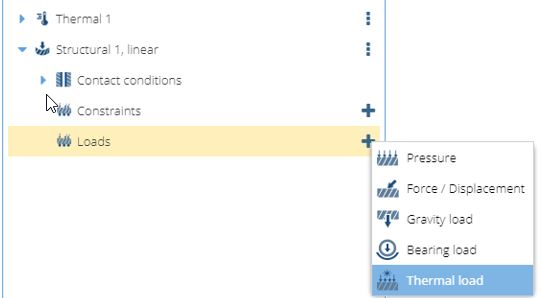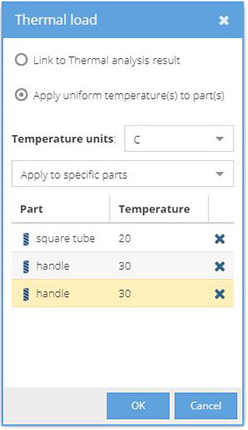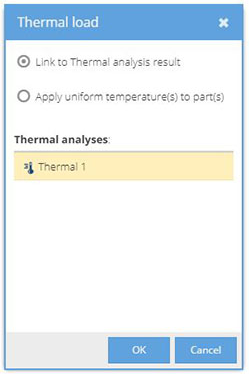Thermal Load
Use thermal analysis results in a structural static analysis as a thermal load.
Thermal loads are then used to simulate deformations and stresses induced by the temperature changes in your model.
The following types of temperature input can be specified:
- Uniform temperature field – a single temperature is assumed to be uniform over the entire model.
- Part based temperature field – temperatures are applied to individual parts.
- Thermal analysis result field – the temperatures are imported from an existing Thermal analysis.
Note that both temperature inputs are interpreted as a temperature change, not as an absolute temperature. For example, if a +10 degree uniform temperature is applied, it means that the temperature in the model has increased by 10 degrees over the course of loading. Zero temperature load means that the temperature has not changed, etc.
Only one thermal load can be applied to a model. Once applied, the Thermal load can be edited or deleted through the action menu on the Thermal Load item in the Project Tree.
- On the Project Tree expand the desired Structural analysis branch.
-
Next to Loads, select .
Figure 1. 
-
Choose one of the following options to specify the load.
Method Steps Apply uniform temperatures to parts - Select the Apply uniform temperature(s) to
part(s) radio button.
Figure 2. 
- Specify Temperature units.
- In the modeling window, select parts.
Link to Thermal analysis results - Select the Link to Thermal analysis
result radio button.
Figure 3. 
- Select the Thermal analysis results from the list.
- Select the Apply uniform temperature(s) to
part(s) radio button.
- Click OK.